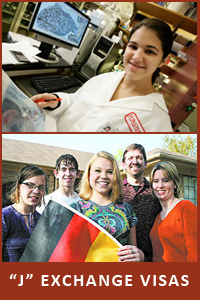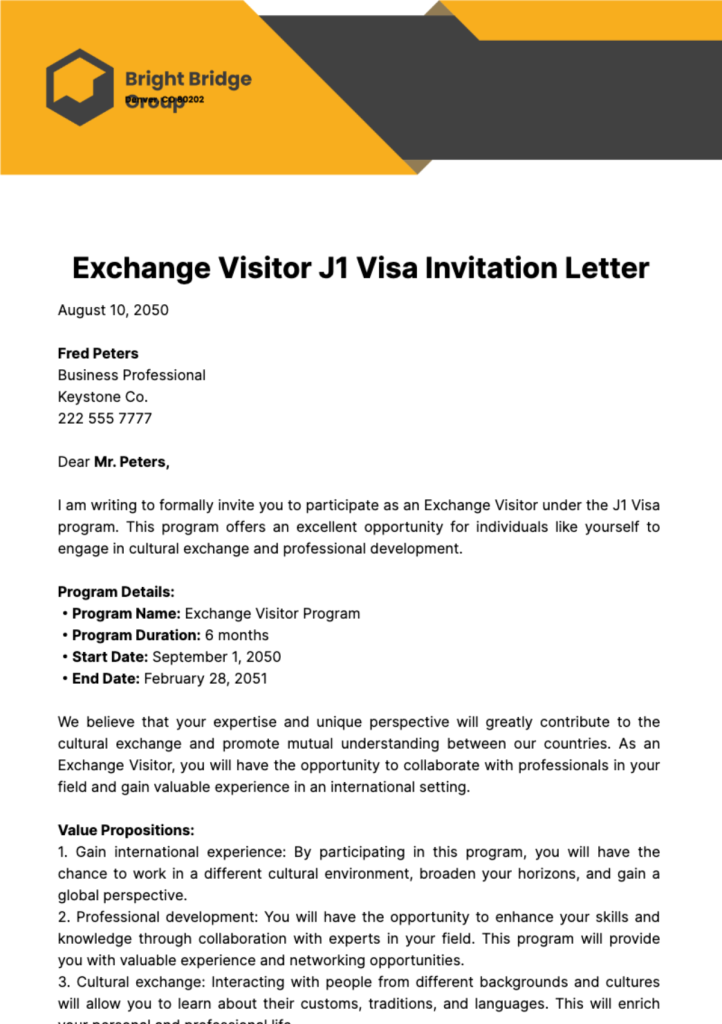

Exchange visitor visas are crucial for individuals seeking to study, conduct research, or participate in cultural exchange programs in the United States. Navigating the application process can feel overwhelming, filled with numerous requirements and intricate procedures. This guide aims to demystify the process by breaking down the key requirements for exchange visitor visas, making the journey more manageable and less stressful. We will delve into the documentation, eligibility criteria, and the application procedure in detail. This guide will serve as a valuable resource, helping you understand the necessary steps and requirements for successfully obtaining your visa. This comprehensive guide is structured to help you understand the following aspects:
- Types of exchange visitor visas
- Eligibility criteria for exchange visitor visas
- Essential documents for the application
- Detailed steps in the application process
- Common mistakes and how to avoid them
Types of Exchange Visitor Visas
Understanding the various types of exchange visitor visas is the first step toward a successful application. Different visas cater to different purposes and exchange programs. Each type has its own specific requirements, and it’s crucial to identify the correct visa type that corresponds to your situation.
Different categories of exchange visitor visas
Exchange visitor visas generally fall under the J-1 visa category. Within this category, various sub-categories exist, reflecting the diverse exchange programs available. These programs are meticulously designed for various purposes and require specific qualifications from applicants.
- J-1 Exchange Visitor Visa: This is the overarching category encompassing diverse exchange programs
- J-1 Traineeships: This type allows individuals to gain practical experience in a specific field. Internships, clinical training, and other forms of experiential learning fall under this category.
- J-1 Internships: This type is specifically for individuals seeking to gain practical work experience related to their field of study. It offers an excellent opportunity to apply knowledge and skills in a professional setting.
- J-1 Students: This type allows students to pursue academic studies. Exchange programs often combine study and cultural immersion. Specific requirements vary based on program design.
Detailed Requirements for Each Category
For accurate understanding, consult official U.S. Department of State resources or equivalent government websites to obtain the most current and precise information.
Eligibility Criteria for Exchange Visitor Visas
Meeting the eligibility requirements is vital for a smooth application process. Strict eligibility criteria ensure that exchange visitor programs serve their intended purpose. Various factors are considered in evaluating eligibility.
Understanding the Prerequisites
To be eligible for an exchange visitor visa, applicants must demonstrate a strong academic record, a clear understanding of their chosen field, and a commitment to cultural exchange. This commitment may be exhibited through prior participation in cultural events, leadership roles, or community engagement initiatives.
- Academic qualifications: Exchange programs often necessitate specific degrees or certifications in the field of study
- Financial capability: Applicants usually need to demonstrate financial stability
- Health certification: Maintaining good health is a crucial aspect of exchange programs
Supporting Documentation
Applicants typically need to provide documentation that validates their eligibility for the exchange program. This includes official academic transcripts, letters of recommendation, and other supporting documents.
Example: A student applying for a J-1 student visa must provide evidence of acceptance to the designated institution. Documentation often includes enrollment letters and details of the exchange program.
Essential Documents for Exchange Visitor Visa Application
Gathering the required documents is a critical aspect of the application. Proper documentation demonstrates the applicant’s identity, purpose, and suitability for the exchange program.
Required Documentation
The exact documents vary depending on the specific exchange visitor program. Applicants must carefully follow the instructions provided by the designated program or institution.
- Passport: A valid passport is required for all visa applications.
- DS-160 Form: Completing and submitting the DS-160 form is a crucial first step in the visa application process. It requires detailed information about the applicant and their intentions.
- SEVIS (Student and Exchange Visitor Information System) Fee: This fee is mandatory for all exchange visitor visa applications
- Evidence of financial support: Proof of funding to support the applicant’s stay in the U.S.
- Recommendation letters: Strong recommendations are crucial to assess the applicant’s suitability for the exchange program.
Importance of Accurate Information
Providing accurate information is paramount to ensuring a smooth and timely application process. Any discrepancies may result in delays or rejection of the application.
Detailed Steps in the Visa Application Process
The exchange visitor visa application involves several steps, each playing a crucial role in the process.
The DS-160 Form and Interview
Completing the DS-160 form is a preliminary step in the visa application process. Applicants need to submit the required information accurately. After the online application, an interview with a consular officer is frequently necessary. The interview is a vital opportunity for the consular officer to evaluate the applicant’s suitability for the exchange program. The interviewer examines the applicant’s sincerity, commitment, and understanding of the program. Thorough preparation for the interview is essential.
Supporting Documents and Submission
Once the DS-160 form is complete, supporting documents need to be submitted. Applicants should meticulously prepare these documents, ensuring all details align with the specified requirements. The embassy or consulate will assess these documents and make their final decision.
Post-Application Procedure
Following the submission, applicants should follow any further instructions from the embassy or consulate. The final stage involves waiting for the decision and any required follow-up actions.
Common Mistakes and How to Avoid Them
Awareness of common pitfalls is crucial for a positive outcome.
Understanding the Requirements
Applicants should meticulously study the detailed requirements for the exchange visitor visa. Failure to adhere to the instructions frequently leads to application delays or rejections. Carefully reviewing the instructions helps mitigate potential issues.
Providing Accurate Information
Verifying and double-checking all submitted information is critical. Inaccuracies may lead to significant delays or rejections. The visa application process is complex, and providing precise and correct information is key to avoiding such issues.
Timely Action
Meeting application deadlines is of utmost importance. Procrastination can result in significant delays in the process. Tracking important dates and deadlines is critical to a timely application.
In conclusion, understanding the requirements for exchange visitor visas is crucial for a smooth application process. This guide has provided a comprehensive overview of the essential documents, eligibility criteria, and application procedures. Remember to carefully review each step and ensure that all required information is accurate and complete. By following these steps, you can significantly increase your chances of a successful visa application. To learn more about specific visa types or procedures, consider consulting with an immigration lawyer or the official U.S. Embassy website. They can offer personalized guidance and ensure you’re navigating the process effectively.